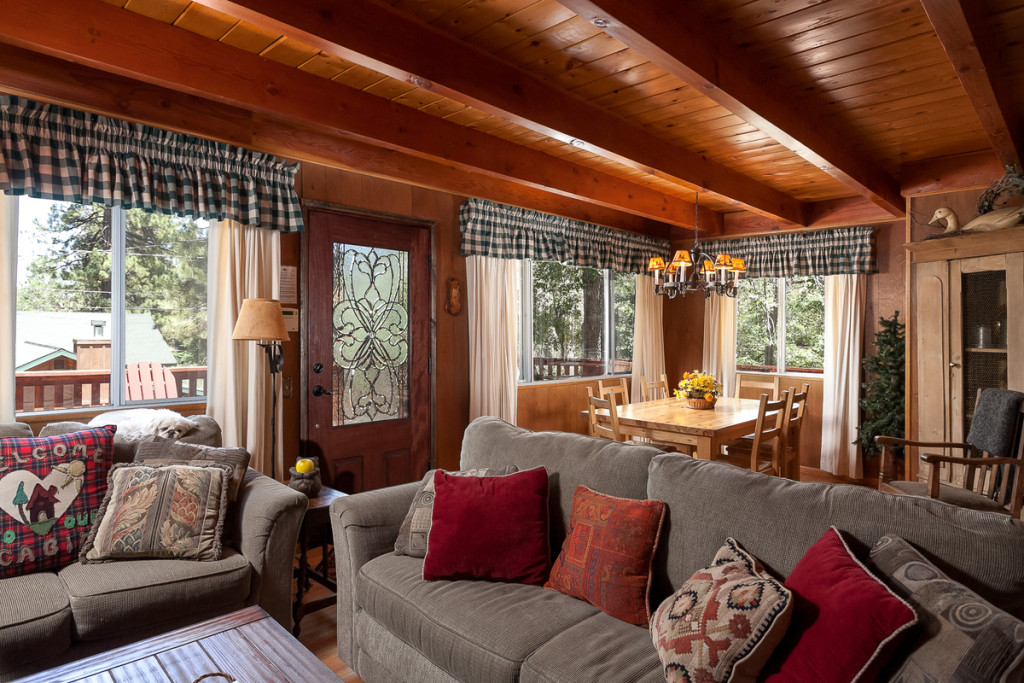Dealing with furniture in a real estate transaction
One of the interesting factors in Big Bear’s resort real estate market is whether or not furnishings are included with the sale of a home or cabin. It may be logical for a seller of a vacation home to leave furnishings with the house at the close, but it should never be assumed that furnishings are included. Because furnishings are considered personal property, as opposed to real property, negotiating this aspect can present a challenge to a transaction.
Both buyer and seller can successfully navigate this part of the deal by thinking ahead, getting details clearly in writing, and keeping things in perspective.
Thinking ahead for the seller
Furniture will not necessarily increase the value of the home in an appraiser’s eyes, but it will help bring confidence to buyers if they feel they are getting good value in the deal.
It’s helpful for the seller to remove any non-negotiable items before putting the home on the market. More times than not, the buyer will ask for those items to be included.
Thinking ahead for the buyer
Before making an offer on a home, the buyer’s agent should find out if the furnishings are included, negotiable, or not included. Buyers should never assume furnishings are included in the sale.
If the listing states that furnishings are included or negotiable, it is wise to include a list with the purchase agreement with the details of the items to be included in the sale (more on this below).
The buyer’s agent should help clarify what is or is not considered personal property, (what about that chandelier?), and what would be the best way to structure the agreement accordingly.
Getting it in writing
Furnishings should be on an itemized list, known as an inventory, which is signed by both the buyer and seller. Savvy Big Bear agents understand how to deal with furnishings and how to properly represent a buyer with its regard. Beware the non-local agent with no experience in this area. An agent’s lack of knowledge regarding this (and many other aspects of the Big Bear real estate market) can result in disservice to his or her clients.
It is best to negotiate the inventory before acceptance. If the listing agent has not prepared it ahead of time, the buyer’s agent should create one to submit with the offer. The inventory should list items to be included, not items to be excluded. If in doubt, leave it out! A buyer cannot claim that an item is missing if he or she can refer to the inventory and see what was agreed upon.
The inventory is not to be sent to the mortgage lender. It is a separate binding contract between buyer and seller only and is not meant for the lender’s scrutiny.
Keeping things in perspective
Buyers and sellers should keep their eyes on the prize. The house is the prize, not the stuff. Buyers have been known to dig in their heels over TVs, rocking chairs, and even ashtrays. People can get psychologically attached to an item. It can create an unpleasant sticking point, and has actually killed deals at the eleventh hour. Don’t let an easily replaceable item knock you off the course of your objective, which is to buy or sell your Big Bear cabin. If the item is not replaceable, it should be protected from the start. Your agent should help you navigate through or prevent these kinds of snags. No fruit bowl, regardless of how lovely it is, is worth the headache of a last minute tug-of-war between buyer and seller.
Keep things in perspective and all parties will be comfortable at the close.




Leave a Reply